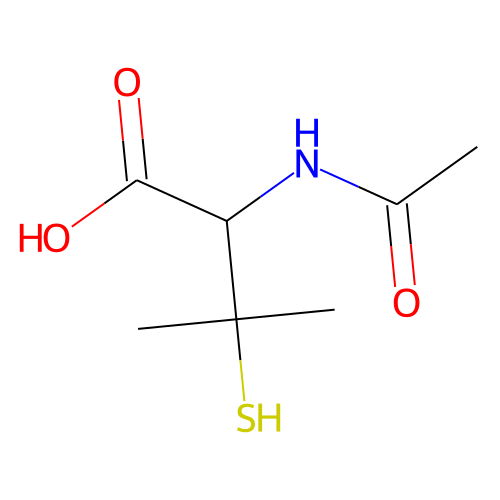N-Acetyl-DL-penicillamine
| Code | Size | Price |
|---|
| TAR-T38156-500mg | 500mg | £260.00 | |||||||||||||||||||||||||||||||||||||||||||||||||||||||||||||||||||||||||||||||||||||||||||||||||
| Special offer! Add £1 to your order to get a TargetMol CCK-8 Kit. Read more here. | |||||||||||||||||||||||||||||||||||||||||||||||||||||||||||||||||||||||||||||||||||||||||||||||||||
Quantity:
Prices exclude any Taxes / VAT
Overview
Regulatory Status: RUO
Shipping:
cool pack
Storage:
-20℃
Images
Documents
Further Information
Bioactivity:
N-Acetyl-DL-penicillamine is a chelating agent.1,2,3It inhibits the binding of methyl mercury to isolated human erythrocytes by 50% and removes 50% of methyl mercury ions from methyl mercury-loaded blood cells when used at a concentration of 1 mM.1,2N-Acetyl-DL-penicillamine (3 mmol/kg per day, p.o.) reduces the biological half-life of mercury and decreases liver, kidney, brain, and blood mercury levels, as well as increases urinary excretion of mercury in a concentration-dependent manner, in mice when administered following injection of methyl mercuric chloride. It decreases mercuric chloride-induced mortality in mice when administered orally at a dose of 1.6 mmol/kg.3N-Acetyl-DL-penicillamine is also an analog of SNAP that does not generate nitric oxide and has been used as a negative control in experiments using SNAP.4,5
CAS:
59-53-0
Formula:
C7H13NO3S
Molecular Weight:
191.25
Purity:
0.98
SMILES:
CC(=O)NC(C(O)=O)C(C)(C)S
References
Nielsen, J.B., and Andersen, O.Effect of four thiol-containing chelators on disposition of orally administered mercuric chlorideHum. Exp. Toxicol.10(6)423-430(1991)
Ogura, T., DeGeorge, G., Tatemichi, M., et al.Suppression of anti-microtubule agent-induced apoptosis by nitric oxide: Possible mechanism of a new drug resistanceJpn. J. Cancer Res.89(2)199-205(1998)
Aaseth, J.Mobilization of methyl mercury in vivo and in vitro using N-acetyl-DL-penicillamine and other complexing agentsActa Pharm. Toxicol. (Copenh.)39(3)289-301(1976)
Takhampunya, R., Padmanabhan, R., and Ubol, S.Antiviral action of nitric oxide on dengue virus type 2 replicationJ. Gen. Virol.87(Pt. 10)3003-3011(2006)
Aaseth, J., Alexander, J., and Deverill, J.Evaluation of methyl mercury chelating agents using red blood cells and isolated hepatocytesChem. Biol. Interact.36(3)287-297(1981)



